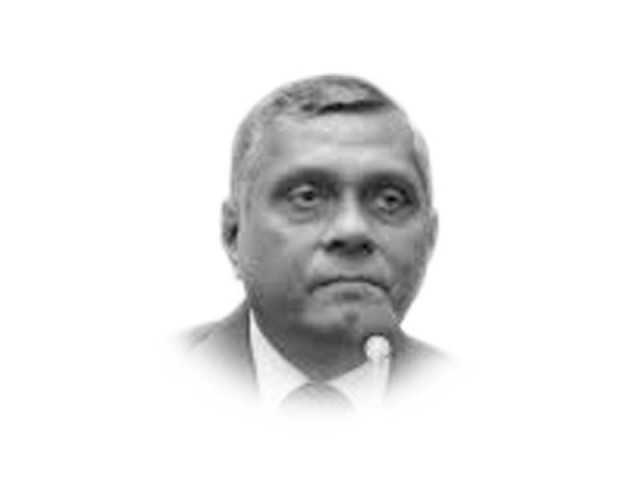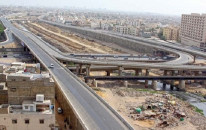Economy is the key issue
PTI clueless about governance, economy and foreign policy, yet confident it will put the house in order

The writer is former Meritorious Professor of International Relations and Dean Faculty of Social Sciences, University of Karachi and can be reached at amoonis@hotmail.com
The World Bank report stated the economic growth rate is expected to recover to 4% in 2020-21 from 5.8% that was achieved during the last PML-N government (2013-18). The shrinking of economy to 50% in just last eight months is a disaster for the country which is still reeling from low exports, artificial foreign exchange reserves, sharp depreciation of the rupee, money laundering worth billions of dollars, enormous price hike, huge foreign and domestic debts and a double-digit inflation.
If all the major indicators of economy — GDP, foreign exchange reserves, balance of payments and inflation — are discouraging, it means Pakistan will not be able to put its own house in order in the years to come.
Despite tall claims made by the PTI before coming to power that it will fix the economy within 100 days and put the country on the path to progress, the situation on the ground since August last year when Imran Khan assumed the charge of Prime Minister is quite dismal.
Why has the PTI’s expectation of overseas Pakistanis extending all-possible help to lift the country’s foreign exchange reserves by making enormous investment not come true during the last eight months? Why is the PTI government unable to bring back what its leaders use to repeatedly refer to $200 billion worth of ill-gotten money kept in various offshore banks? Why have the claims of adopting austerity and eliminating the VVIP culture not been fulfilled? These are the questions that are being genuinely asked by people.
One can figure out four major realities which tend to deepen Pakistan’s economic malaise with each passing day. The successive regimes that have assumed power in post-1971 Pakistan have sidetracked these realities while blaming their predecessors for passing an economic mess on to them.
First, as pointed out by Barack Obama during his days in the White House, “a nation should live within its means”. This is a successful way of dealing with a country’s economic predicament.
Isn’t it a reality that none of the governments in Pakistan over the years — whether elected or otherwise — concentrated on keeping a balance between the income and expenditures? For the fiscal ongoing year, the federal government had estimated Rs4.43 trillion worth of tax collection, but by June 30, 2019, a revenue shortfall of Rs400 billion has been forecasted.
According to Prime Minister Imran Khan, 80% of Pakistan’s revenue income is spent on servicing debt and meeting defence expenditures. How is it possible then to run the country’s administration and carry out development programmes with the rest of 20%?
Second, the reality that despite all efforts during the last eight months — including depreciating the rupee against the dollar by 20% since August 2018 — exports have risen to a mere 5%. And the trade gap in the fiscal year 2018-19 is estimated to be $23 billion.
The gap in the revenue and expenditures on the one hand and imports and exports on the other has deepened Pakistan’s economic crisis. Why has the volume of exports not increased despite the firm government claims and why is there only a marginal decrease in the volume of imports? One needs to be mindful of the fact that unless the country’s economy is transformed from an import-oriented one to an export-oriented, a breakthrough should not be expected.
Enhancing exports would require innovation, enterprise, meeting quality control, competition, and uninterrupted supply of energy to production units. Furthermore, a shift from exporting raw materials which fetch meager amount, to exporting technology, automobiles and industrial machinery will quadruple Pakistan’s exports.
That is what was done by China, South Korea, Singapore and Malaysia. Bangladesh is not a cotton-growing county but exports $30 billion of garments, whereas Pakistan is world’s fourth largest cotton-producing country but earns only $5.5 billion from garments export. Without an industrial and technological revolution in Pakistan along with a secure and work-oriented environment, Pakistan will not be able to catch up even with its counterparts in Asia as far as raising the quantum of exports is concerned.
Third, a major source of income for a country that wants to excel in the world of economy is foreign investments. Unlike many countries in the region — where billions of dollars of foreign direct investment (FDI) has led to a great leap forward — in Pakistan, despite the much-talked-about CPEC, the FDI is expected to be around $3.7 billion during the year 2018-19 as compared to $11 billion in the UAE and $12 billion in Malaysia.
Likewise, income from remittances also strengthens the economy. During the year 2018-19 with a nominal enhancement, Pakistan’s remittances are expected to be around $20 billion which provides a valuable cushion for dealing with huge trade deficit.
Even then, income from remittances for Pakistan is much less than in case of the Philippines which is $30 billion and Mexico which is $26 billion. Pakistan will have to tap opportunities which exist in enhancing remittances from around 10 million overseas Pakistan.
Finally, Pakistan’s undocumented economy is 30% where the government fails to get the required revenue. Out of a population of more than 200 million, tax filers are less than 1.6 million. In that situation, how can one expect the country’s revenue to go up when those who are earning billions of rupees through their businesses, consultancy and other types of work are not paying taxes?
Unfortunately, the PTI government is clueless about governance, economy and foreign policy, yet it expresses confidence that it will put the house in order. If austerity and elimination of the VVIP culture are the hallmarks of the PTI and its chairman, Imran Khan, then why is there no transparent investigation into projects, particularly the Peshawar Metro Bus, about which there have been allegations of embezzlement of billions of rupees? The PTI government which aspires to establish a Medina-like welfare state has not even taken the first step in that direction.
The gap between the rich and the poor is widening, and no effort has been made to reduce it. Instead of following a policy of self-reliance, the government is borrowing billions of dollars from friendly countries and is ready to sign a bailout package with the IMF to rescue the economy from further damage. Prices of food, vegetables, fruits, gas and fuel have escalated to alarming proportions.
Immediately after coming to power, the PTI had constituted an Economic Advisory Council composed of renowned economists in order to stabilise the economy but during the last eight months things have deteriorated.
The focus and energy of the PTI government is on launching campaigns against the allegedly corrupt PML-N and PPP and not on utilising its energies on truly transforming Pakistan into a welfare state by establishing the rule of law, putting a proper justice system in place, abolishing the VVIP culture, and carrying out across-the-board accountability.
Published in The Express Tribune, April 19th, 2019.
Like Opinion & Editorial on Facebook, follow @ETOpEd on Twitter to receive all updates on all our daily pieces.














COMMENTS
Comments are moderated and generally will be posted if they are on-topic and not abusive.
For more information, please see our Comments FAQ